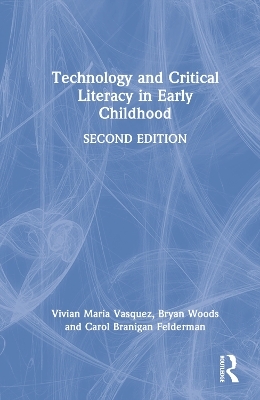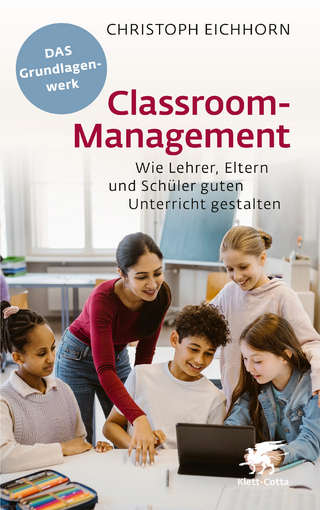
Technology and Critical Literacy in Early Childhood
Routledge (Verlag)
978-0-367-02649-3 (ISBN)
Updated with discussions of media literacy and new pedagogical tools, the second edition features new classroom examples and experiences that highlight the ways in which critical literacy, technology and media literacy come together in everyday life in the early childhood classroom. The inviting examples model how to use the interests and inquiry questions of young learners as a springboard for creating a critical curriculum. Each chapter includes Reflection Points, pedagogical invitations, and Resource Boxes to imagine new possibilities of working with students in engaging and supportive ways.
The inspiring stories, guidance, and tools this book make it a great resource for pre-service teachers and students in Early Childhood Education and Literacy Education, and primary teachers and educators.
Vivian Maria Vasquez is Professor in the School of Education, at American University, USA. Bryan Woods is an Elementary School Educator and teacher researcher with Peel District School Board, in Ontario, Canada. Carol Branigan Felderman currently teaches first grade with the Falls Church City Public Schools in Falls Church, Virginia, USA.
Introduction
Mapping out the Terrain of This Book
Pedagogical Features
1 Setting a Context for Exploring Critical and
Media Literacies Using Technology
Differential Access and Connectivity
New Technologies as Tools for Engaging in Critical Literacy Work
Key Aspects of Critical Literacy
Who We Are
Extending Children’s Repertoire of Literacy and Communications Practices
New Technologies Does Not Equal Critical Literacy
PART ONE
One Teacher’s Journey
Subtle and Explicit Uses of Technology
Re-Designing My Little Pony
Using Technology as a Teaching and Communicative Tool
2 Building Relationships Between Home and School With the Use of Technology
Teaching and Learning with Pre-K and K Children: The First Month
Establishing a Home/School Partnership Through Documenting and Sharing Learning
3 Beginning With Coming Together as a Community to Create Spaces for Critical Literacy
Hello My Names Are/ Hello My Names Are Not
Names Are Not Just Names
Seamlessly Creating a Generative Curriculum
4 Reading With Text and Against Text With Young Children
Reading With the Text
Reading Against the Text
I’m Glad I’m a Boy! I’m Glad I’m a Girl!
Reading With and Against Froodle
Discussing Froodle
Lessons from Kushi
5 Working With Multimedia Text and Technology
Layered Response to a Multimedia Text
Where Was Their Home?
Gloves for the Homeless
PART TWO
Further Insights into Teaching with Technology
6 Yes We Can!: Using Technology as a Tool for Social Action
Building From Children’s Inquiry Questions
Travel Trunks: Using the Internet as Text and Tool
Creating Space for Social Action
7 Our Families Don’t Understand English!
What Is a Podcast?
Creating 100% Kids
Introducing Subrina
Exclusion and Inclusion
Negotiating Identities/Growing Literacies
Creating New Spaces for Participation
The Final Show
Children’s Construction of Identity
8 What About Antarctica?
Reading the Clustr Map
Further Explorations
The 100% Kids Clustr Map
Columbia Gets a Dot
9 The Tomato Trials
Backbreaking Work?
Critically Reading the Web
The Trials Begin
Tomato Trial Findings
In Retrospect
10 Desires, Identities, and New Communication Technologies
Meaningful and Sustained Learning
Learning From Our Students
| Erscheinungsdatum | 17.08.2020 |
|---|---|
| Zusatzinfo | 13 Line drawings, black and white; 16 Halftones, black and white; 29 Illustrations, black and white |
| Verlagsort | London |
| Sprache | englisch |
| Maße | 152 x 229 mm |
| Gewicht | 453 g |
| Themenwelt | Schulbuch / Wörterbuch |
| Sozialwissenschaften ► Pädagogik ► Schulpädagogik / Grundschule | |
| Sozialwissenschaften ► Pädagogik ► Vorschulpädagogik | |
| ISBN-10 | 0-367-02649-X / 036702649X |
| ISBN-13 | 978-0-367-02649-3 / 9780367026493 |
| Zustand | Neuware |
| Informationen gemäß Produktsicherheitsverordnung (GPSR) | |
| Haben Sie eine Frage zum Produkt? |
aus dem Bereich


